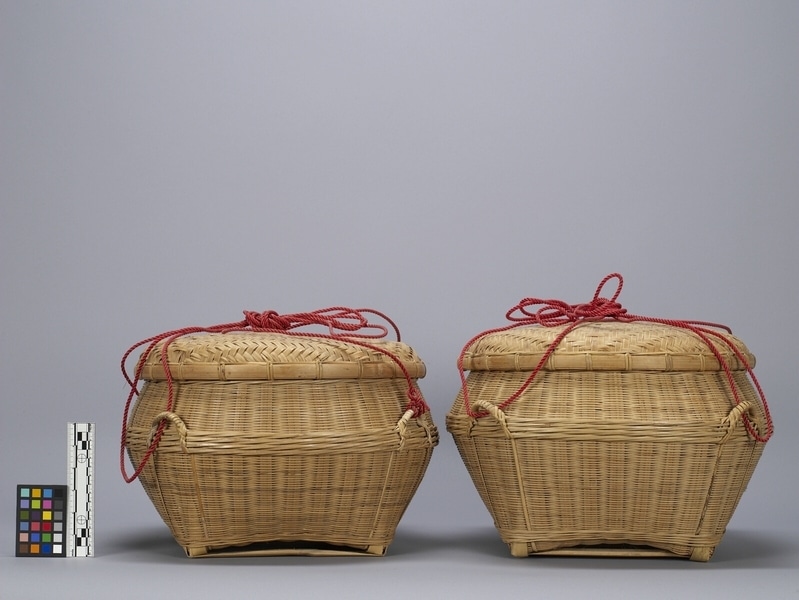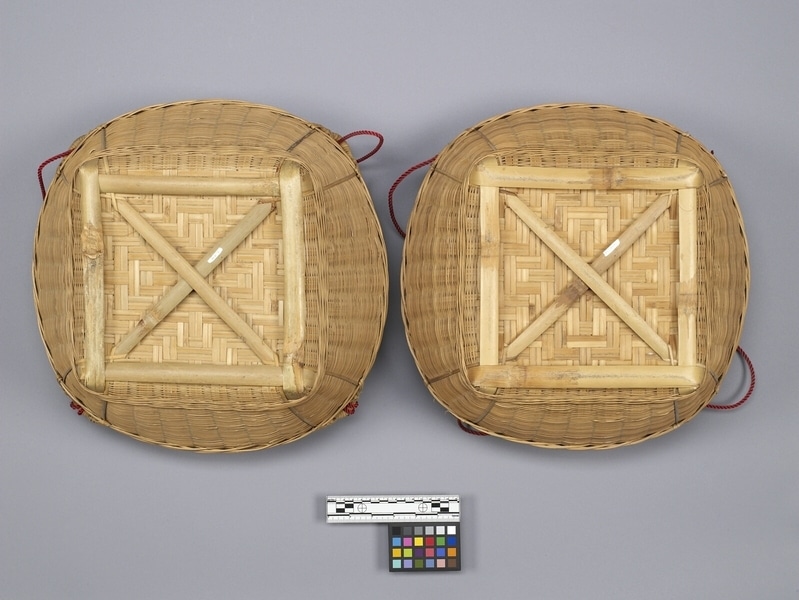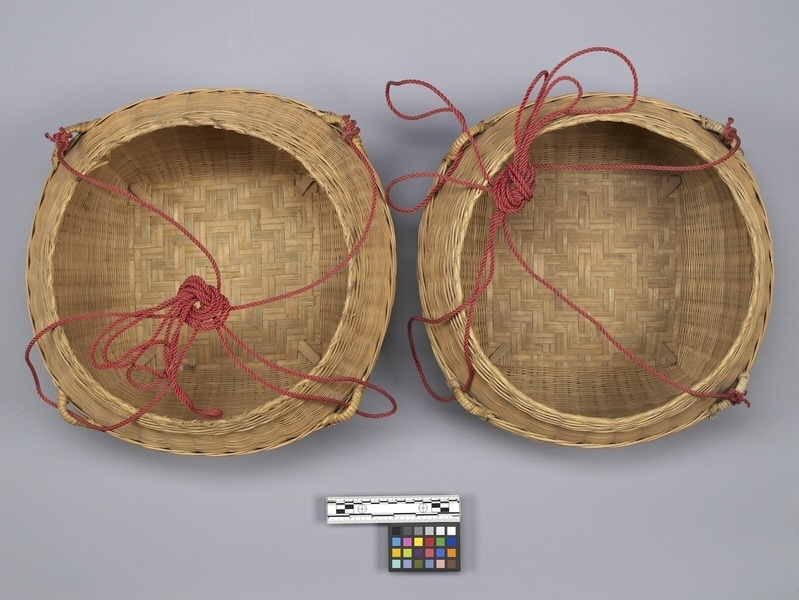Basket Item Number: Edz1194 a-d from the MOA: University of British Columbia




Description
Pair of woven bamboo baskets: a) basket, b) lid; c) basket, d) lid. Each base has four corners at the bottom and widens towards the centre of its height where the strips of bamboo are slightly wider and there are four woven loops. Each lid is circular with a rounded shoulder and a wide band of bamboo around the rim. The lids are secured on top of the basket bases with red synthetic cord that is looped through the woven loops on each basket base.
History Of Use
Baskets of this specific type have and had two uses: to carry offerings to worship gods and ancestors, and to be carried by women to contain gifts of food when they were going to visit their natal families. At the time of collection they were still being used to carry offerings, and this continues until the present. They were normally carried by women, but very occasionally by men. Offering materials normally include paper representations of money, gold and silver, and clothing, and cooked food, including pork, chicken, and squid. Incense and candles, wine, and tea or tea leaves were and are also included. To worship gods, the worshipper carries the offering materials to the shrine or temple in the basket or baskets and arranges them on the altar or offering table prior to worshipping. The incense, and candles, and paper offerings are then burned. To worship ancestors, a similar procedure was and is followed, but with the offerings being placed either in front of the altar in the ancestral hall or in front of the ancestor’s grave or tomb. The offerings may be arranged on the inverted lid of the basket. After the mid-twentieth century the New Territories of Hong Kong began to undergo fundamental changes. The people who had been settled there before 1898, when the British colonizers claimed the area, began to give up rice agriculture and coastal fishing, turning instead to wage labour and increased employment overseas. By the end of the century, educational opportunities leading to the possibility of white-collar work also increased, together with western influences. Twentieth-century changes meant that objects and clothing once useful and appropriate were no longer needed and generally were discarded. Baskets of this type are still seen, and used to carry offerings, but carrying poles are rarely used to hold them.
Narrative
These baskets was purchased from a shop on Chung On Street in Tsuen Wan. The shop sold tools and household utensils. Hakka people are one of the two original land-dwelling groups that settled the area that became the New Territories of Hong Kong. Their spoken language, and some customs, differed from those of the other original group, the Cantonese or Punti. The Cantonese arrived first and settled on the best rice-growing lands, while the Hakka began to arrive after the late 17th century and settled the more hilly lands.
Item History
- Made in Tsuen Wan, Hong Kong, China during 1979
- Collected by Elizabeth L. Johnson during 1979
- Owned by Elizabeth L. Johnson before March 17, 1980
- Received from Elizabeth L. Johnson (Seller) and Museum of Anthropology Shop Volunteers (Funding source) on March 17, 1980
What
- Name
- Basket
- Identification Number
- Edz1194 a-d
- Type of Item
- basket
- Material
- bamboo grass and synthetic fibre
- Manufacturing Technique
- cut, split, smoothed and woven
- Overall
- height 30.0 cm, diameter 44.0 cm
Who
- Culture
- Chinese: Hakka
- Field Collector
- Elizabeth L. Johnson
- Previous Owner
- Elizabeth L. Johnson
- Received from
- Elizabeth L. Johnson (Seller) and Museum of Anthropology Shop Volunteers (Funding source)
Where
- Holding Institution
- MOA: University of British Columbia
- Made in
- Tsuen Wan, Hong Kong, China
When
- Creation Date
- during 1979
- Collection Date
- during 1979
- Ownership Date
- before March 17, 1980
- Acquisition Date
- on March 17, 1980
Other
- Item Classes
- basketry
- Condition
- good
- Accession Number
- 0610/0164 a-d